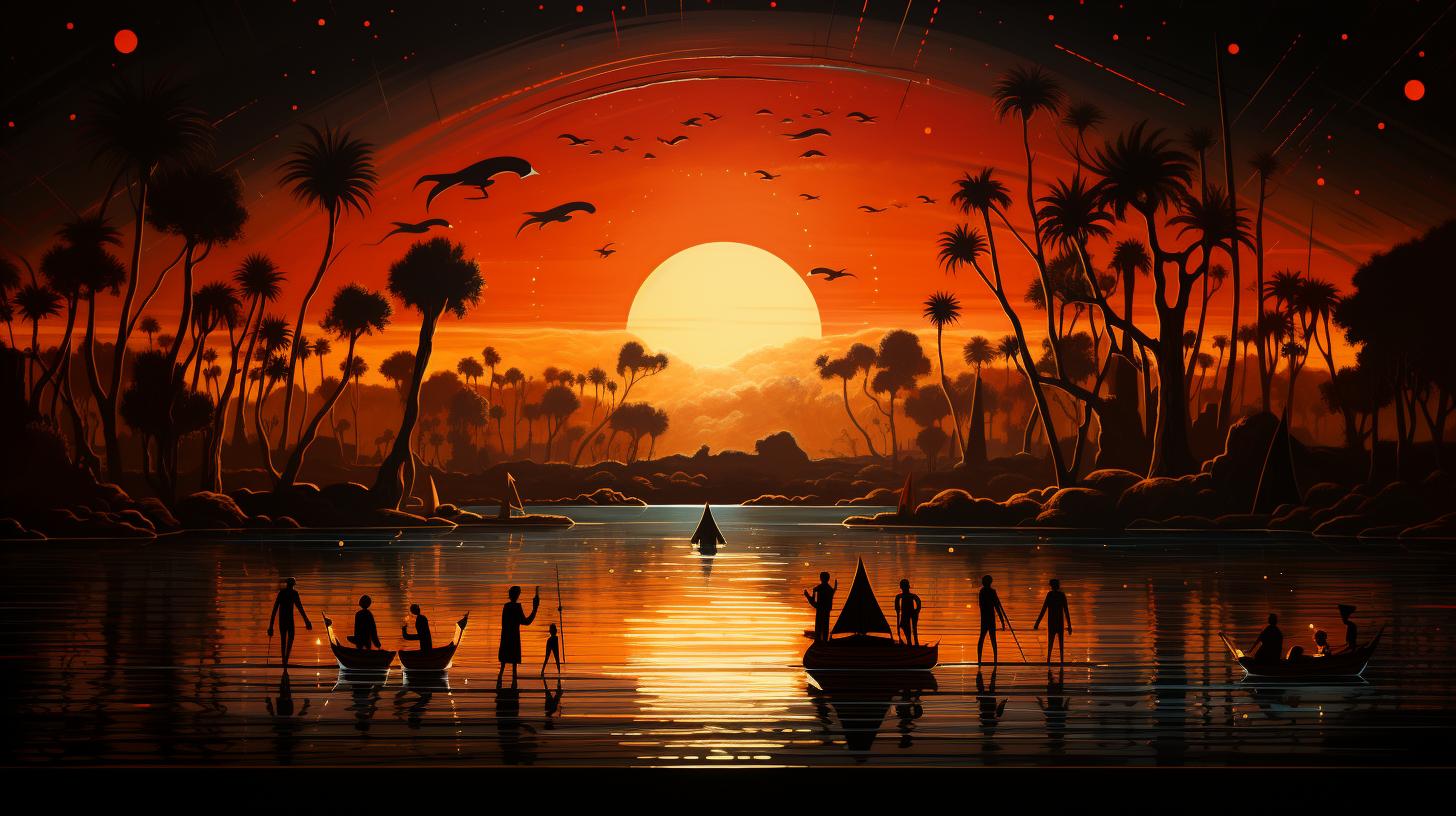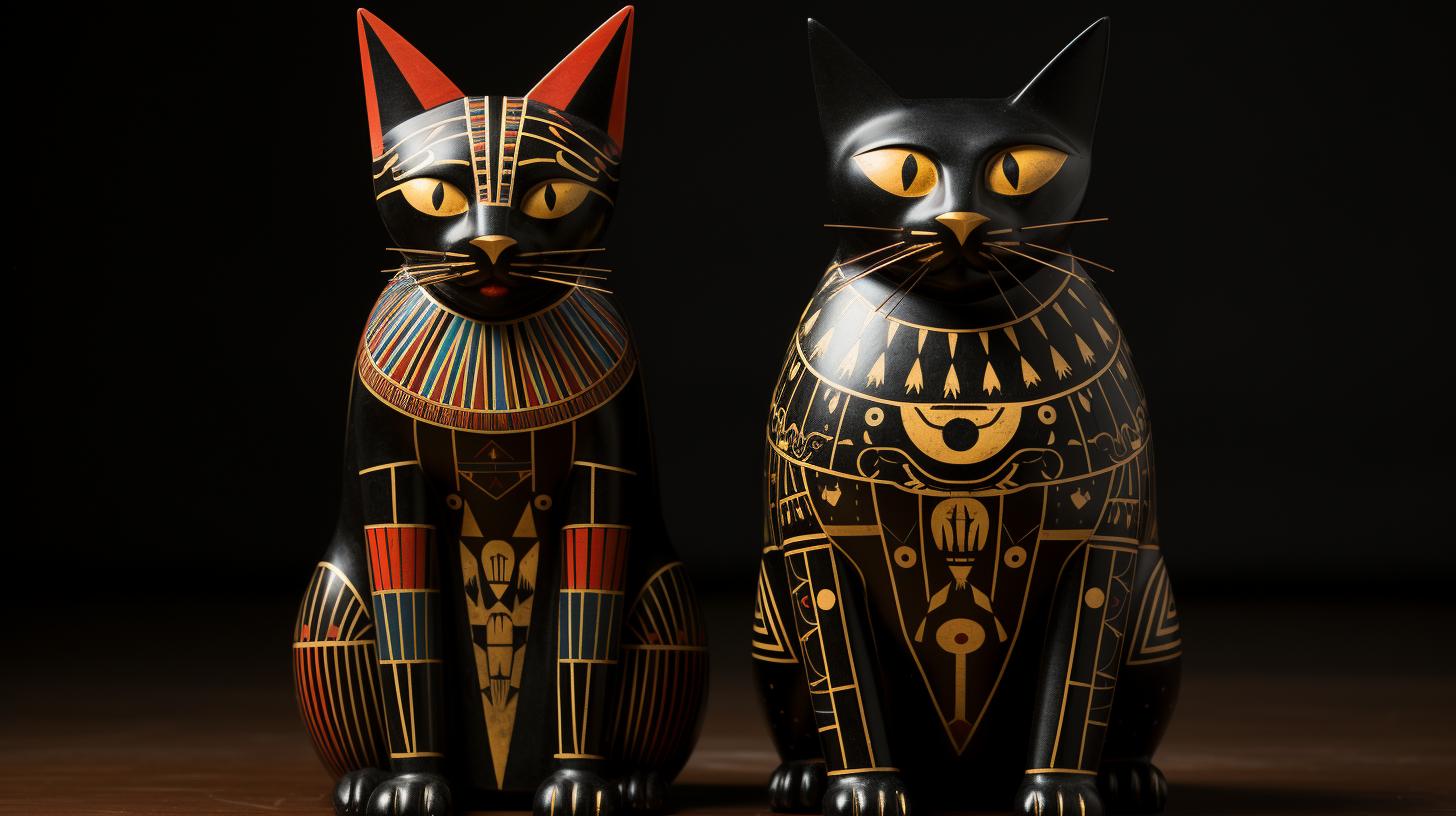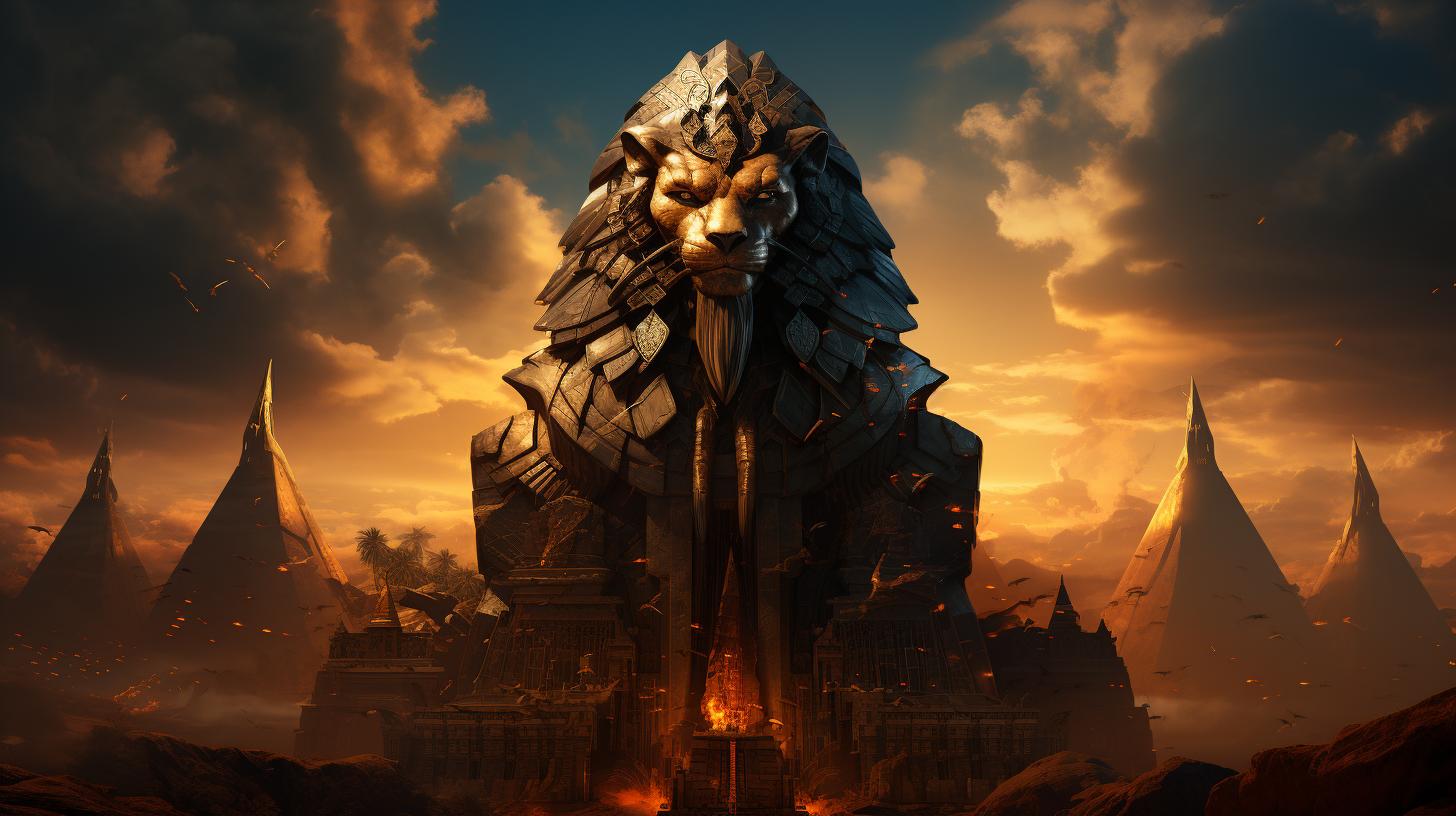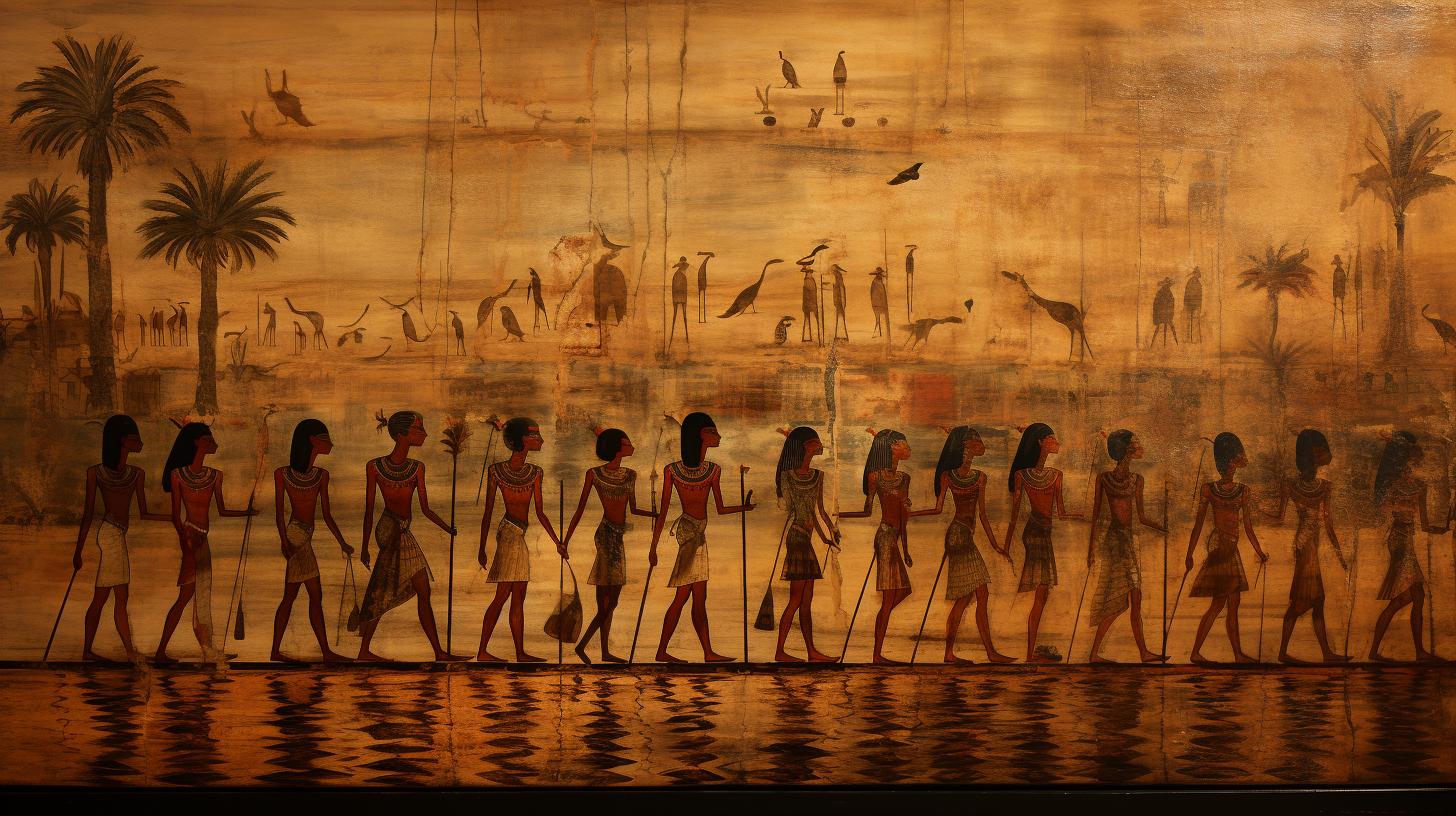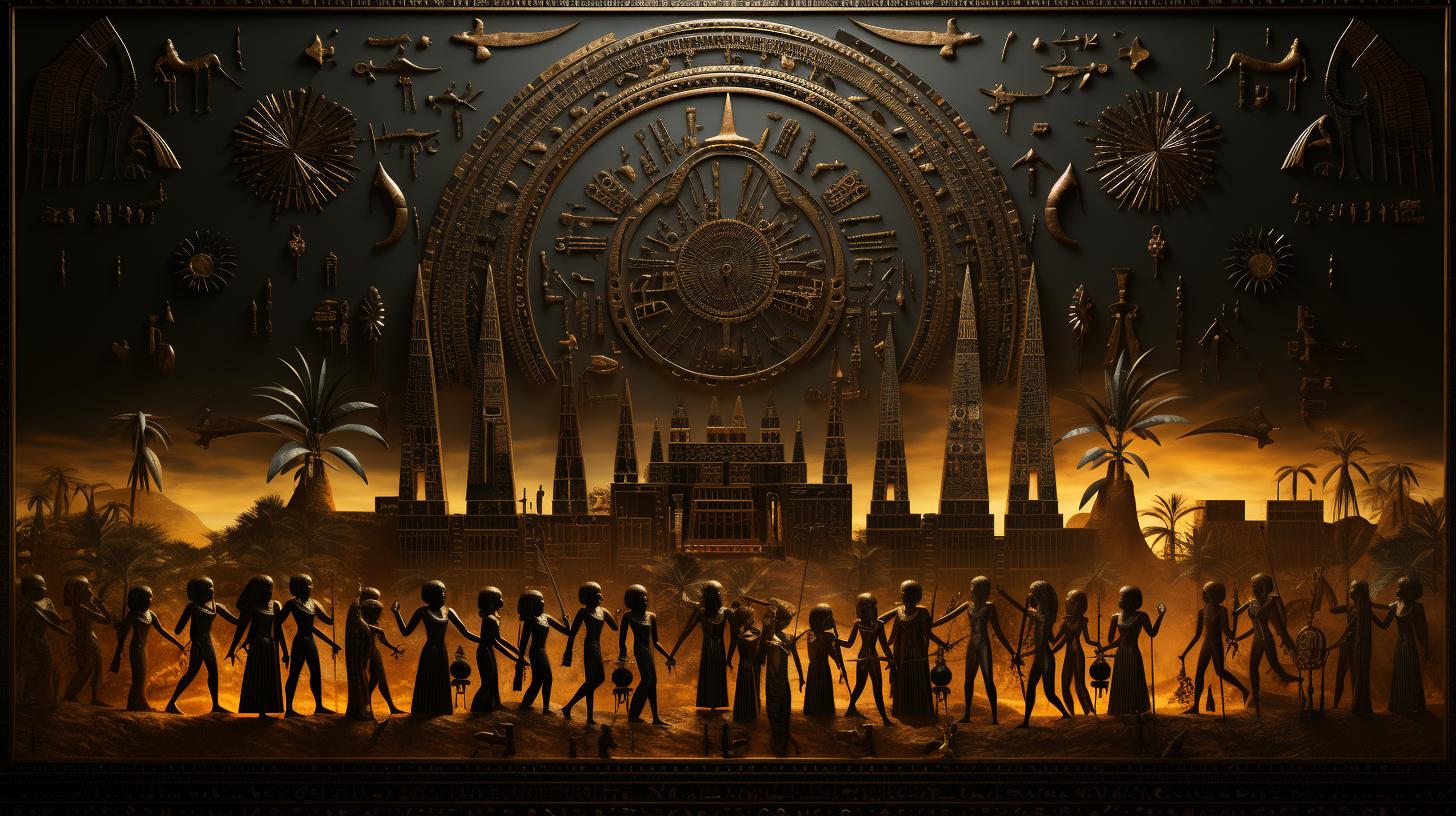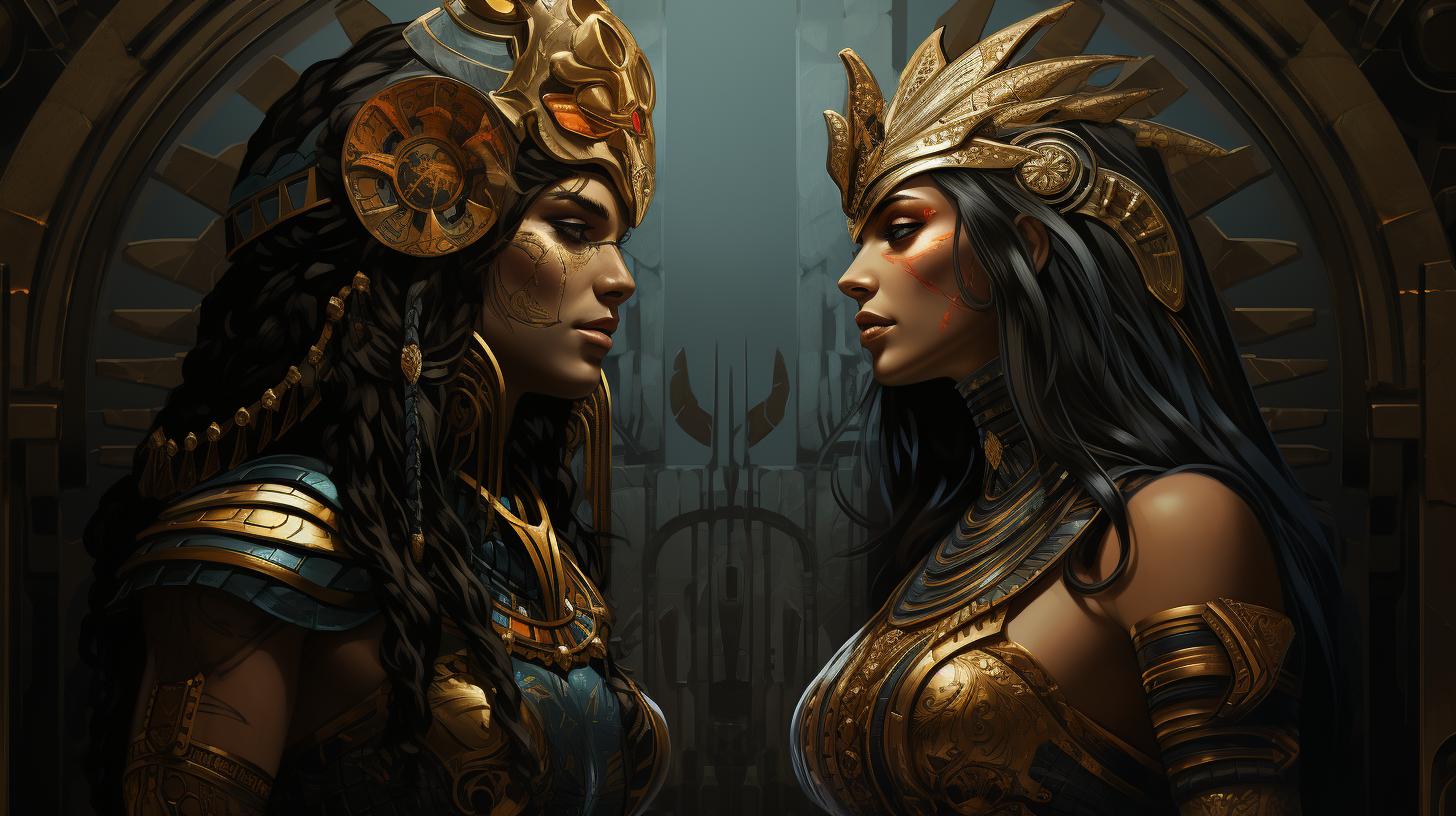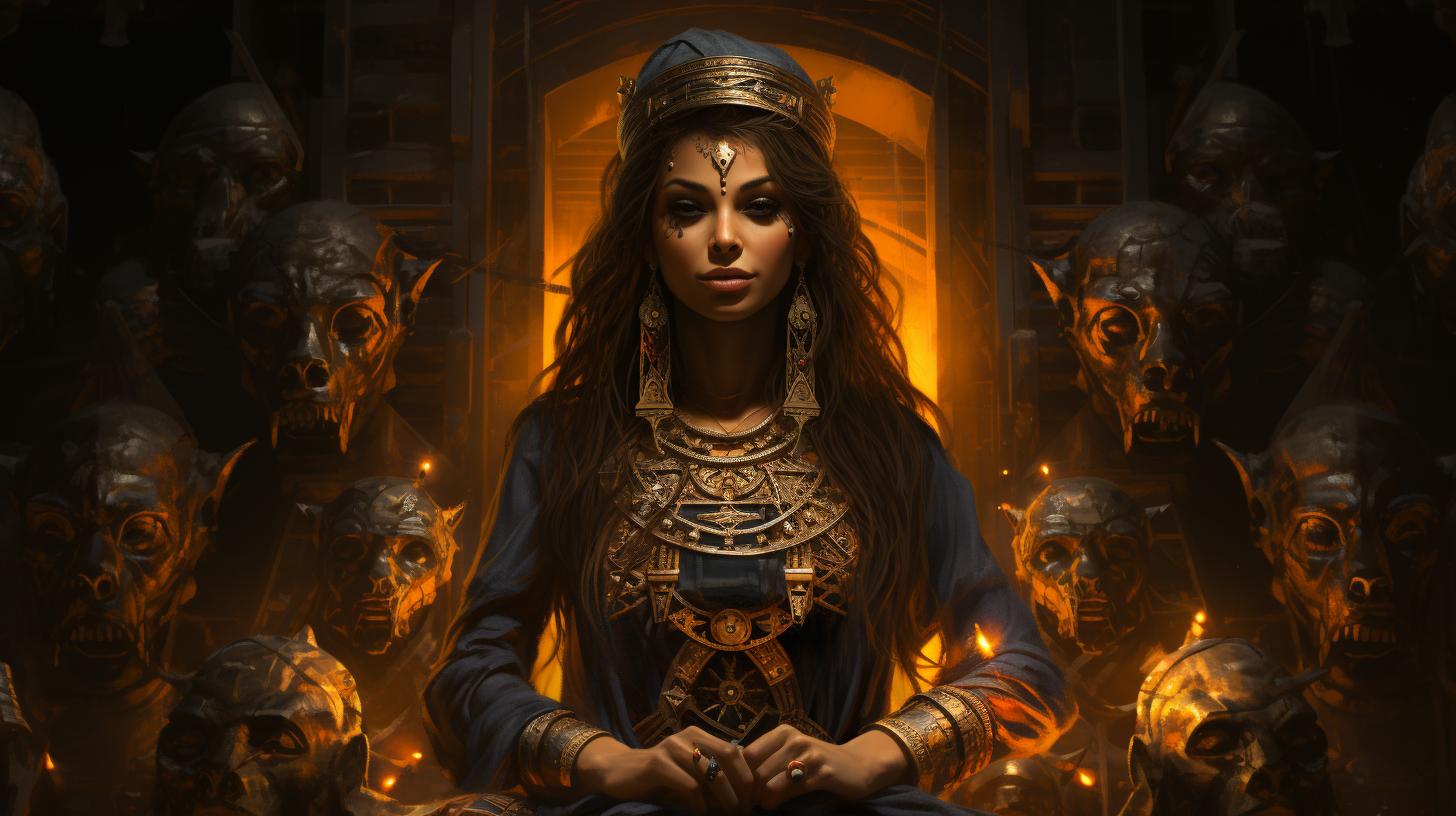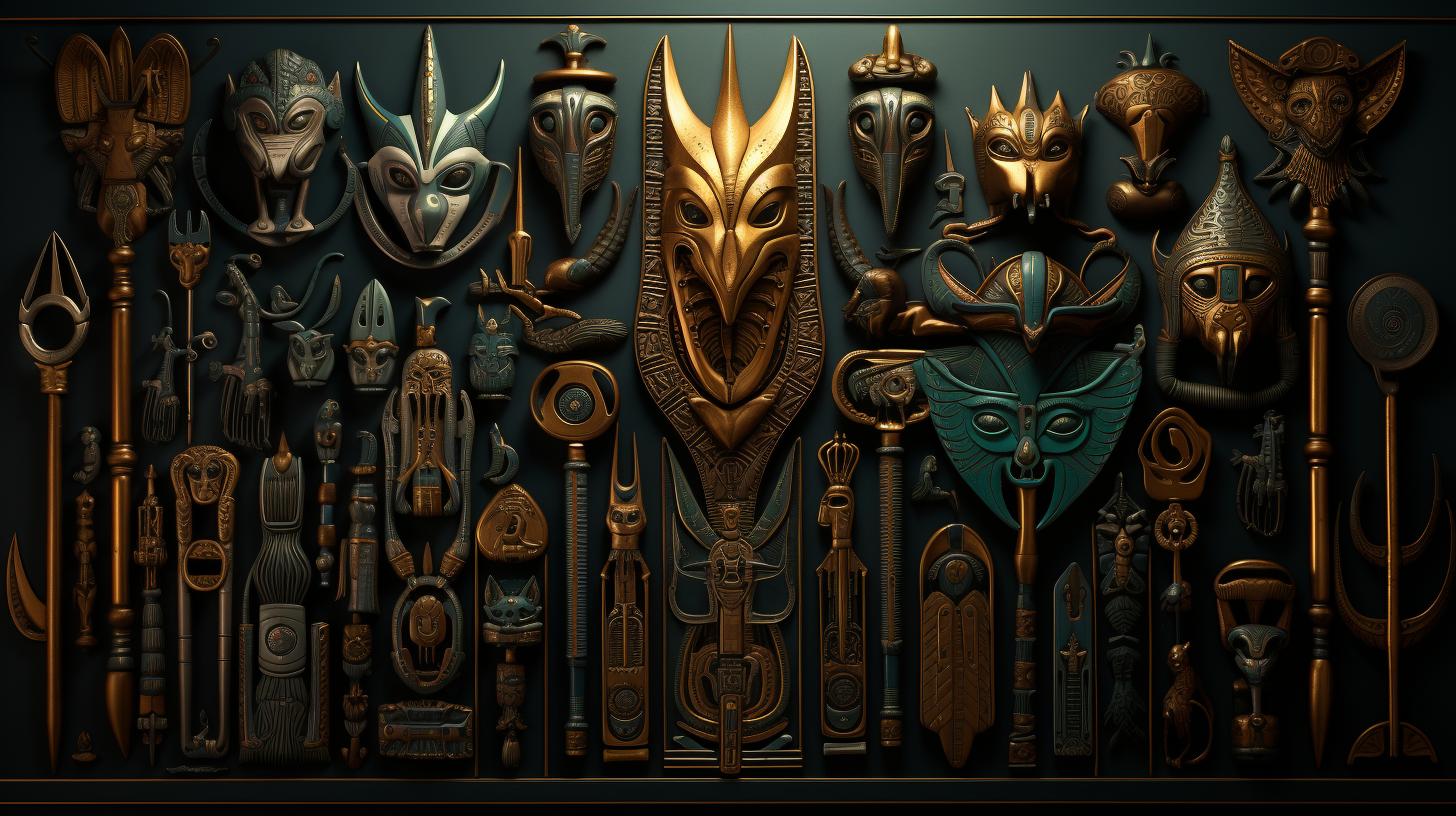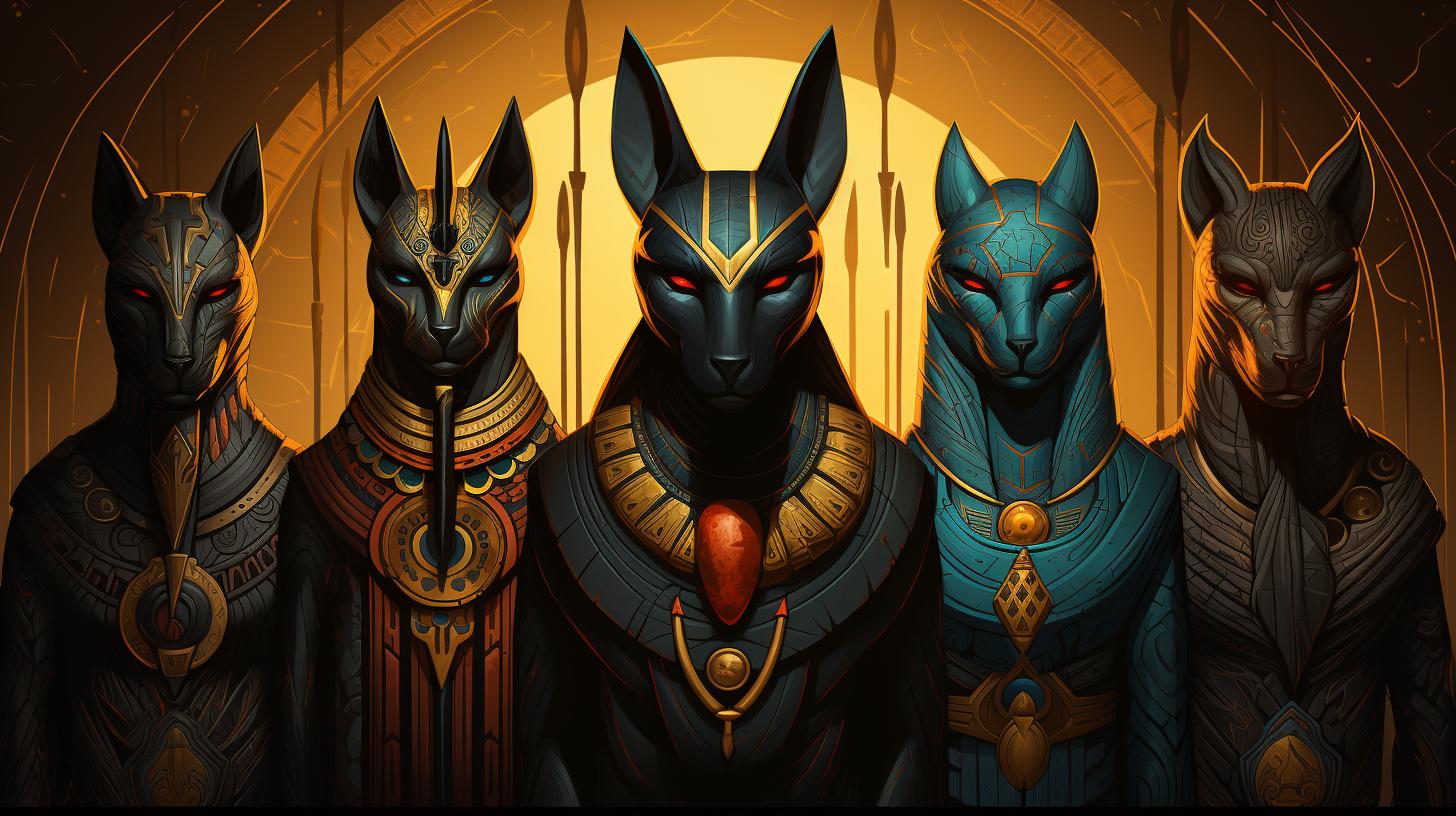Egyptian Myths and Legends: Unlocking the Ancient Wonders of Egypt
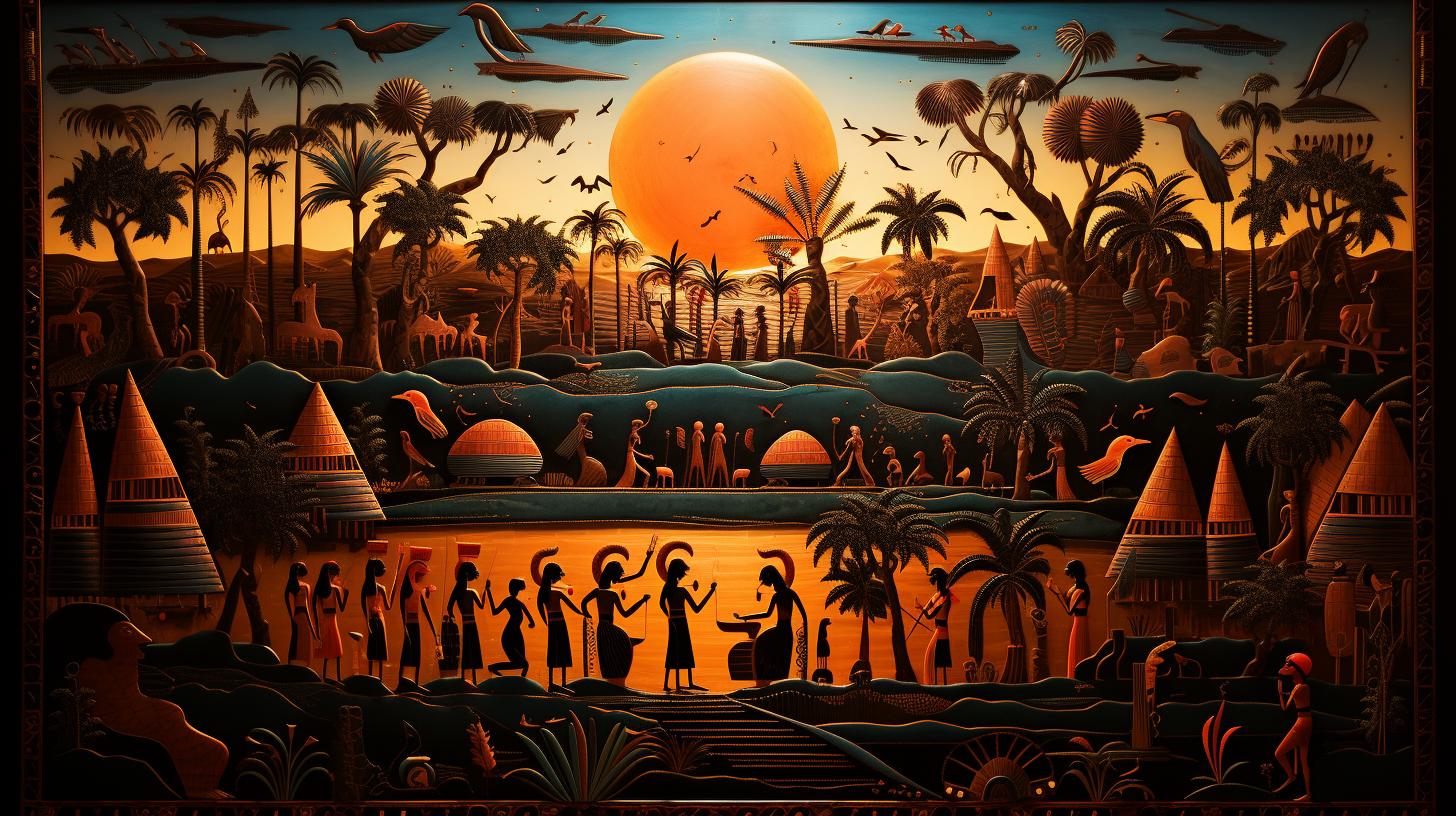
Egyptian Myths and legends hold a profound significance in the ancient culture of Egypt. These captivating tales allowed Egyptians to comprehend and make sense of their world, attributing direct roles to gods in their lives and the natural order of the universe.
From the creation myths involving Ra’s celestial journey to the struggles of deities like Osiris, Isis, and Horus against the disruptive god Set, these myths shed light on the cyclical nature of time and the eternal balance of maat, the fundamental order of the cosmos.
Such symbolic narratives continue to mesmerize and offer valuable insights into Egypt’s vibrant and enigmatic past.
Overview of Egyptian Mythology
Egyptian mythology is a rich tapestry of religious beliefs, art, and literature that shaped the ancient Egyptian culture in profound ways. It provided the Egyptians with a framework to understand and make sense of the world around them, as they believed that gods played a direct role in their lives and the natural order of the universe.
Origins of Egyptian Mythology
The origins of Egyptian mythology are rooted in the belief that the world emerged from a primordial chaos. Creation myths describe how the gods formed the universe and brought order out of chaos.
These myths often feature the sun god Ra and his celestial journey, as well as the struggles of other gods like Osiris, Isis, and Horus against the disruptive god Set.
Role of Gods in Egyptian Myths
In Egyptian myths, gods played a crucial role in shaping the daily lives of the Egyptians. They were believed to embody different aspects of the natural world, and their actions and behaviors reflected the Egyptians’ understanding of the world.
The pharaoh, considered a divine ruler, played a vital part in maintaining the cosmic balance and maat, the fundamental order of the universe.
Creation Myths in Egyptian Mythology
Creation myths in Egyptian mythology reveal the intricate process through which the gods brought order to the world. These stories often involve the journey of the sun god Ra, who represents the cyclical nature of time and the renewal of maat.
The myths also highlight the constant conflict between the forces of order (maat) and the forces of chaos. Through these myths, the Egyptians sought to explain the origins of the world and their place within it.
Major Egyptian Deities
Ra: The Sun God
Ra, the powerful Sun God, held immense significance in Egyptian mythology. He symbolized the sun’s life-giving and creative force, providing light and warmth to the world. As the supreme deity, Ra embarked on a daily journey through the sky, battling against the forces of darkness and chaos.
His presence symbolized the cyclical nature of time, as he rose each morning to bring a new day. Ra’s energy and power were an integral part of ancient Egyptian culture and rituals.
Osiris and Isis: The Divine Couple
Osiris and Isis were considered one of the most important divine couples in Egyptian mythology. Osiris, the god of the afterlife and fertility, represented rebirth and eternal life.
His sister and wife, Isis, embodied magic, healing, and motherhood. Their timeless love story included betrayal, death, resurrection, and the birth of their son, Horus. Together, Osiris and Isis provided hope for eternal life and were central figures in funerary rituals and beliefs.
Horus: The Avenger
Horus, the son of Osiris and Isis, was the avenger and protector of the pharaoh. As a falcon-headed god, he symbolized divine kingship and represented the pharaoh’s authority.
Horus battled against the chaotic god Set, seeking revenge for his father’s murder. The outcome of their conflict reflected the struggle between order and chaos in Egyptian mythology. Horus was deeply revered by the ancient Egyptians and played a crucial role in maintaining cosmic balance.
Set: The Chaotic God
Set, the god of chaos and disorder, represented the opposing force to maat, the order of the universe. He was often portrayed as a powerful creature with the head of an unidentified animal.
Set’s constant battles with Horus highlighted the perpetual conflict between the forces of order and chaos. Though feared and seen as a disruptive deity, Set had an important role in maintaining cosmic balance and challenging the established norms in Egyptian mythology.
Stories and Legends in Egyptian Mythology
Stories and legends form the heart of Egyptian mythology, providing insights into the beliefs and values of ancient Egyptians. These captivating narratives explore the cycles of life, death, and the eternal struggle between order and chaos.
Let’s delve into some prominent tales:
The Journey of Ra: Cycle of Time
Central to Egyptian mythology is the epic journey of Ra, the powerful sun god. As the sun rises in the sky each day, it symbolizes the cycle of time and the constant renewal of maat, the cosmic order.
Ra’s voyage through the heavens and his nightly descent to the underworld, known as the Duat, reflect the eternal battle between light and darkness. This myth emphasizes the cyclical nature of existence and the importance of maintaining balance in the world.
Osiris Myth: Life, Death, and Resurrection
The story of Osiris, the god of the afterlife, represents the triumph of life over death. Osiris is betrayed and murdered by his brother Set, the chaotic god of disorder.
However, through the love and devotion of his sister-wife Isis, Osiris is resurrected and becomes the ruler of the underworld. This myth illustrates the Egyptians’ belief in the possibility of rebirth and their quest for eternal life and immortality.
Horus and Set: Battle for the Throne
The conflict between Horus, the falcon-headed sky god, and Set is a pivotal tale of Egyptian mythology. Horus, the rightful heir to the throne, engages in a fierce struggle against his uncle Set, who seeks to usurp his position.
Through a series of epic battles and trials, Horus ultimately emerges victorious, symbolizing the triumph of order and justice over chaos. This myth reinforces the Egyptians’ belief in the divine right of pharaohs to rule and the importance of upholding maat in society.
These stories and legends in Egyptian mythology provide profound insights into the worldview and values of ancient Egyptians. They illuminate the complex interplay between gods and humans, the cosmic forces shaping their lives, and the perpetual struggle between order and chaos.
Symbolism and Metaphors in Egyptian Myths
Egyptian myths are rich in symbolism and metaphors, offering profound insights into the ancient Egyptians’ understanding of the world and their place within it. These captivating tales utilize symbolic language and metaphorical representations to convey complex concepts and philosophical ideas.
In this section, we will explore some of the key symbolic elements found in Egyptian mythology.
Maat: The Order of the Universe
At the heart of Egyptian mythology lies the concept of Maat, which represents the fundamental order and harmony of the universe. Maat embodies the principles of truth, justice, and cosmic balance upon which the world operates.
Through myths and legends, the ancient Egyptians sought to comprehend the delicate interplay between Maat and the forces of chaos.
Conflict between Order and Chaos
The Egyptian myths illustrate an ongoing struggle between forces of order and chaos. These stories depict the constant battle between the gods who uphold Maat and those who disrupt it.
The conflict between order and chaos serves as a metaphor for the perpetual struggle to maintain harmony and balance in both the natural and human realms.
Gods as Representations of Natural Elements
In Egyptian mythology, the gods often embody various aspects of the natural world.
Each deity is associated with specific elements, such as the sun, the Nile, or the desert. Through their actions and behaviors, these gods symbolize the forces at play in nature and provide the ancient Egyptians with a way to comprehend and interact with the natural environment.
By delving into the symbolism and metaphors present in Egyptian myths, we gain a deeper understanding of the intricate belief system and worldview of ancient Egypt. These myths serve as mirrors reflecting the complex relationships between order and chaos, and the profound connection between humans and the natural world.
Influence of Egyptian Mythology on Ancient Egyptian Culture
The rich tapestry of Egyptian mythology had a profound influence on various aspects of ancient Egyptian culture. These captivating myths and legends seeped into every facet of life, shaping religious rituals, inspiring intricate temple decorations, and leaving an indelible mark on funerary traditions and beliefs.
Religious Rituals and Practices
Egyptian mythology played a central role in the religious rituals and practices of ancient Egypt. The gods and goddesses depicted in these myths were worshipped fervently, with elaborate ceremonies held in their honor.
These rituals involved offerings, prayers, and processions to ensure the gods’ favor and protection. The mythology provided a framework for understanding the divine realm and establishing a connection between the mortal and immortal realms.
Temple Decorations and Artistic Influences
The vivid and intricate tales of Egyptian mythology served as a wellspring of inspiration for temple decorations and artistic endeavors. Temples were adorned with vibrant paintings, reliefs, and statues depicting mythological scenes and deities.
These artistic representations not only showcased the mythology but also served as a visible reminder of the gods’ presence and the significance of the myths in daily life. The imagery captured the essence of the mythological narratives, celebrating the power and majesty of the gods.
Funerary Traditions and Beliefs
The influence of Egyptian mythology extended even into the realms of death and the afterlife. Funerary traditions and beliefs were deeply intertwined with the myths and legends of ancient Egypt. The rituals surrounding death, mummification, and burial were guided by the belief in the journey of the soul through the Duat, the realm of the dead, and its eventual reunion with the gods.
Mythological narratives such as the Osiris myth provided hope for an afterlife filled with resurrection and continued existence. Tombs and burial sites were adorned with scenes from the mythology, ensuring the deceased’s connection to the divine realm.
The profound impact of Egyptian mythology on every aspect of ancient Egyptian culture is a testament to its enduring power and significance. From religious ceremonies to artistic expressions and beliefs surrounding death, the myths and legends shaped the way ancient Egyptians understood and interacted with the world around them, leaving a lasting legacy that continues to fascinate and inspire to this day.
Legacy of Egyptian Myths and Legends
The rich and captivating Egyptian myths and legends continue to leave a lasting legacy that enchants and intrigues people to this day. These ancient tales provide valuable insights into the beliefs, values, and culture of the ancient Egyptians, shedding light on their society and worldview.
Let us explore the profound impact of Egyptian mythology on various aspects of our modern world.
Modern Fascination with Egyptian Mythology
Egyptian mythology holds a magnetic appeal for people around the globe, captivating the imagination with its mystical allure. From the majestic pyramids to the enigmatic Sphinx, the grandeur of ancient Egyptian architecture and artifacts keeps this fascination alive.
Numerous books, documentaries, and exhibitions delve into the depths of Egyptian myths, enchanting enthusiasts with their rich symbolism and enduring mysteries.
Interpretations and Adaptations in Literature and Pop Culture
The enduring appeal of Egyptian myths can be seen in their influence on literature and popular culture. Countless authors have drawn inspiration from these ancient tales, incorporating them into their works of fiction.
From novels like “The Kane Chronicles” by Rick Riordan to films like “The Mummy” franchise, Egyptian mythology serves as a wellspring of inspiration for captivating storytelling that resonates with audiences of all ages.
In addition to literary adaptations, Egyptian mythology has also made its way into various forms of contemporary art, music, and fashion. Its iconic symbols and striking imagery often find their place in modern designs, art installations, and even tattoo artistry, paying homage to the enduring legacy of this ancient mythology.
Insights into Ancient Egyptian Society and Beliefs
Studying Egyptian myths and legends offers valuable insights into the social and religious beliefs of ancient Egyptian society. The tales reflect how the Egyptians perceived the world around them and their place within it.
The gods and goddesses portrayed in these myths embody different aspects of nature and human existence, revealing the significance of agriculture, fertility, and the afterlife in their culture.
Furthermore, the myths reveal the importance of maintaining harmony and balance, embodied in the concept of maat.
This fundamental order was intricately connected to the rule of the pharaoh, who was considered a divine ruler responsible for upholding maat and ensuring the prosperity of his people.
By exploring these ancient stories and the values they represent, we gain a deeper understanding of the profound influence Egyptian myths and legends have had on shaping the ancient Egyptian society and its enduring cultural heritage.
In conclusion, the legacy of Egyptian myths and legends extends far beyond their ancient origins. They continue to captivate and inspire, transcending time and geography to leave an indelible mark on the cultural fabric of our world.
.

